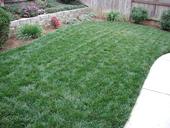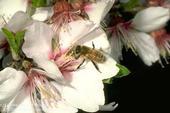
“Kill your lawn!” has become a popular phrase and landscaping trend in recent years. Whether you are looking to completely remove your lawn or just renovate it, this article will give you useful information to help you decide how best to do away with your existing lawn and prepare for your new design.
There are many reasons someone might be looking to get rid of their lawn.
- Can be costly to maintain (water, landscapers, time, equipment, fertilizers, etc.)
- Aesthetics (desire a different look)
- Create habitat (plants for birds, pollinators, natural enemies, etc.)
- Replace groundcover (plant different grass type, install turfgrass alternative)
- Save water by...
- Author: Elaine Lander

This year, National Pollinator Week is June 22 to June 28, celebrating the value that pollinators such as bees, birds, butterflies, bats, and beetles provide to the ecosystem.
Pollinators, and natural enemies, can be harmed by pesticides when people are trying to control pests in their gardens and landscapes. Pollinators can be killed or harmed if they are sprayed or exposed directly to a pesticide, and when they encounter pesticide residues in the environment. You can protect pollinators in your garden and landscapes by doing the following:
- Use pesticides sparingly. Many pests can be managed using an integrated approach without the need to...

Ten years ago the U.S. Senate voted unanimously and created National Pollinator Week. This week reminds us of the vital role pollinators play in providing our world's fruits, nuts, seeds, and vegetables. According to the Pollinator Partnership, pollination produces nearly $20 billion worth of crops annually in the U.S.
Pollinators include bees, beetles, bats, butterflies, moths, and wasps. Many pollinators including bats, predatory wasps, and syrphid flies are also beneficial predators because they...
- Author: Kathy Keatley Garvey
![Adult syrphid fly. [J.K.Clark]](https://ucanr.edu/blogs/UCIPMurbanpests/blogfiles/32516small.jpg)
Will all the pollinators please stand up!
Or do a fly-by like the Blue Angels or a crawl-by like babies competing in a diaper derby.
Bees--there are more than 4000 of them in North America--are the main pollinators, but don't overlook butterflies, beetles, birds, bats and moths.
And flies.
Flies?
Yes, flies.
Hover flies, aka flower flies or syrphid flies, belong to the family Syrphidae. Scientists estimate that worldwide, there are about 6000 described species in 200 genera. As their name implies, hover flies "hover," sort of like a helicopter preparing to...
![Figure 1. Honey bee on tidytips. [K.K. Garvey]](https://ucanr.edu/blogs/UCIPMurbanpests/blogfiles/31553small.jpg)
August 22nd is National Honey Bee Day so we thought we'd repost one of our previous articles that discussed ways gardeners can help protect honey bees.
Author: Dr. Eric Mussen, UC Cooperative Extension Apiculturist
Most people have heard about the decline in honey bees (Figures 1 and 2) during the last several years and want to help. Gardeners and landscapers who want to help protect honey bees can do so by learning more about the factors that cause bee decline and by practicing Integrated Pest Management or IPM.
Better Nutrition, Fewer Pesticides
The actual cause of...


